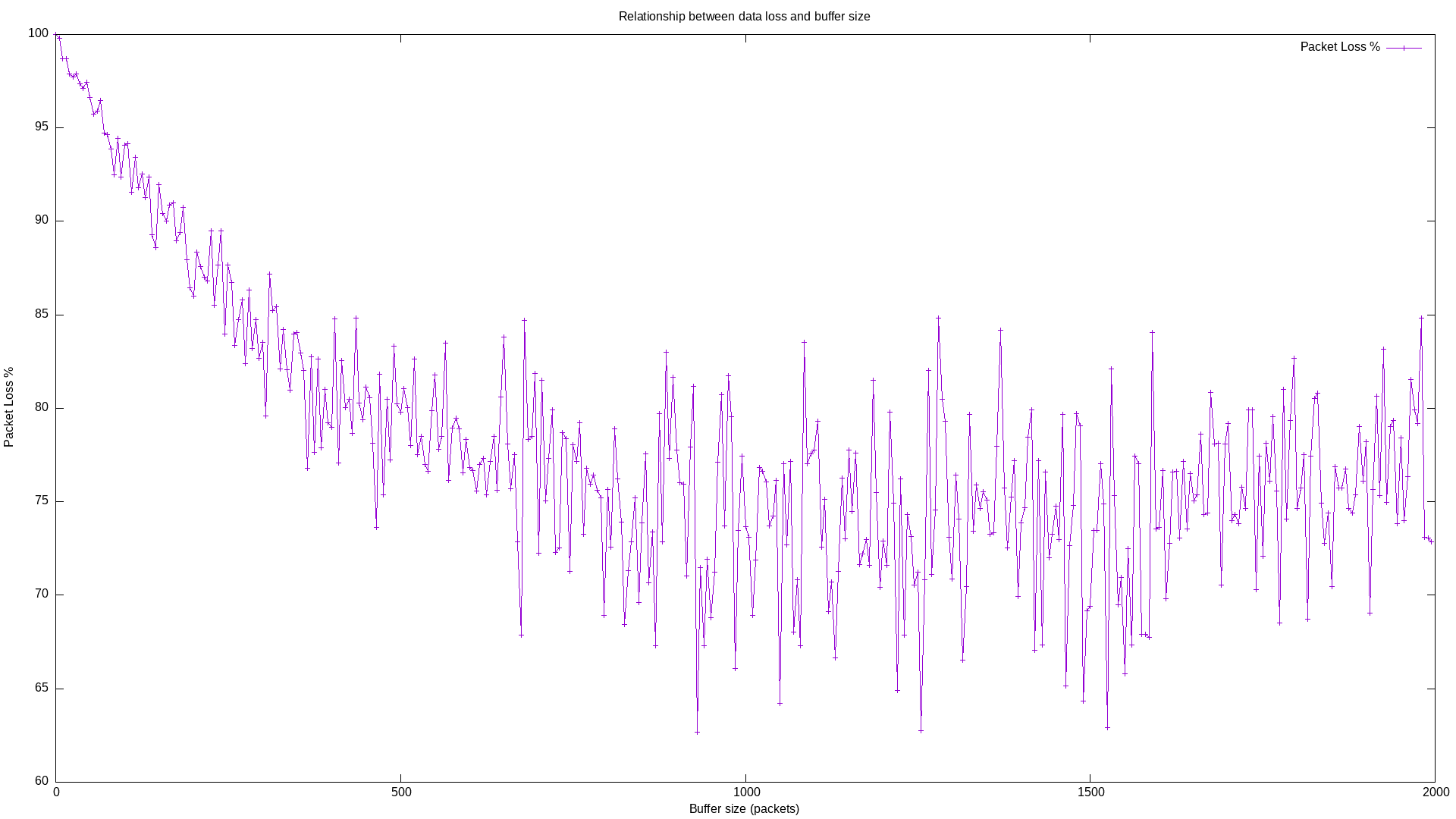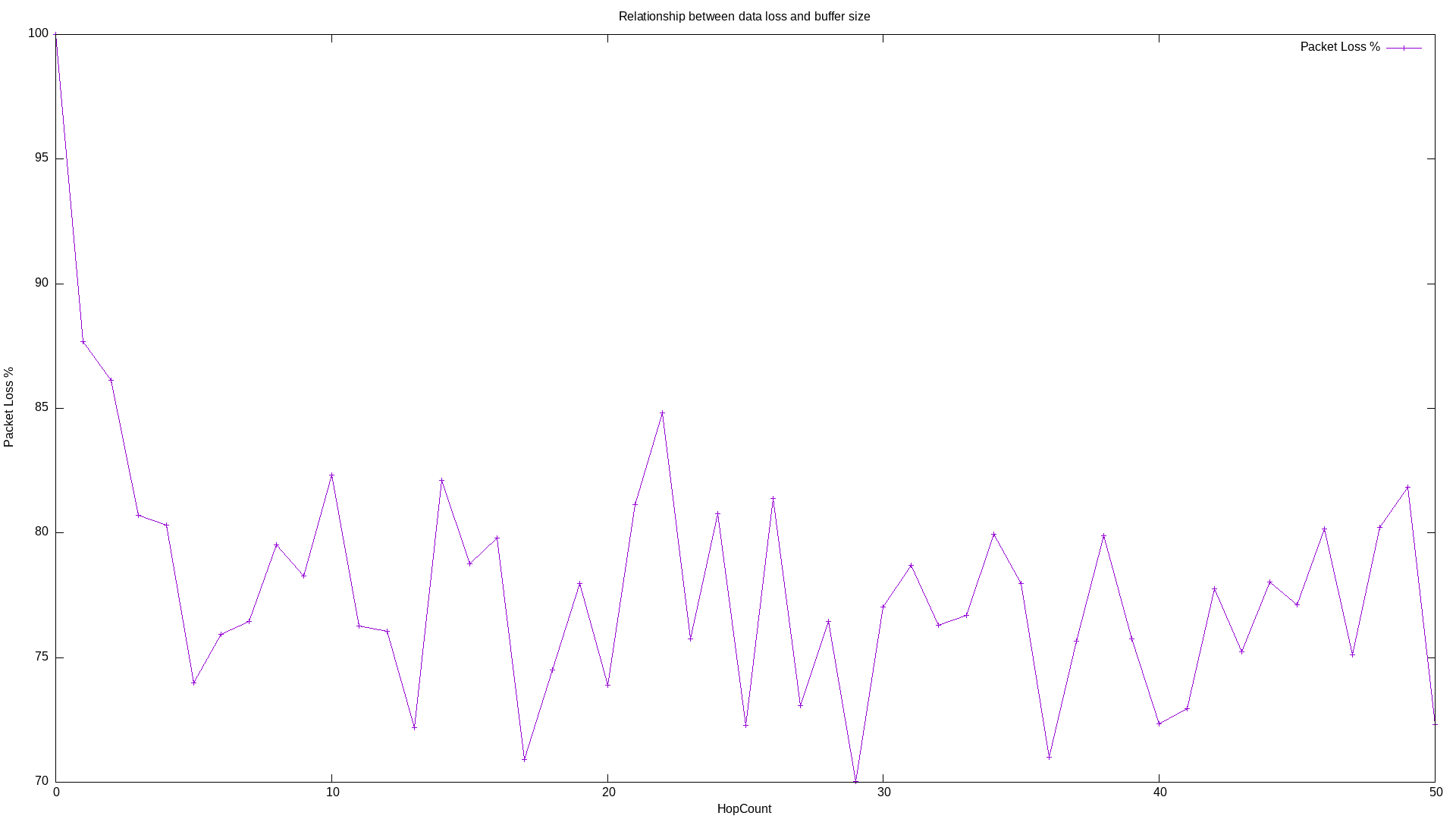This is a benchmark tool for the Epidemic routing protocol implemented using ns3.
First of all pull the docker image:
docker pull ghcr.io/herbrant/epidemic-ns3:mainThen run the simulation with
docker run -t ghcr.io/herbrant/epidemic-ns3:main "--PrintHelp"If you want to get the gnuplot's files created during the simulation, bind-mount an host's directory into the container at /gnuplot/
docker run -t -v <your-host-path>:/gnuplot/ ghcr.io/herbrant/epidemic-ns3:main- ns3 v3.38
- g++/clang
- cmake
- make
- python3
First, make sure you have already completed all the step required for the installation of the simulator shown here.
Then clone the repository in the scratch folder:
cd scratch
git clone https://github.com/Herbrant/epidemic-ns3.gitand build the project with
cd ..
./ns3 run "epidemic-benchmark --PrintHelp"The following options are available:
Benchmark example shows epidemic routing scenario presented in the original paper. There are 50 nodes in an area of 1500 m x 300 m. 45 nodes are selected to send a message of size 1KB to the other 44 nodes. The total messages are 45 * 44 = 1980 messages. The size change after every iteration of the simulation from 0 to the maxQueueLength. The ranges for the transmission are from 10 m to 250 m while the default is set to 50 m.
Program Options:
--nWifis: Number of "extra" Wifi nodes/devices [50]
--appLogging: Tell echo applications to log if true [false]
--nodeSpeed: Node speed in RandomWayPoint model [10]
--packetSize: The packet size [1024]
--txpDistance: Specify node's transmit range [50]
--hopCount: Specify number of hopCount [50]
--maxQueueLength: Specify number of maxQueueLength [200]
--queueEntryExpireTime: Specify queue Entry Expire Time [+16.6667min]
--beaconInterval: Specify beaconInterval [+5s]
General Arguments:
--PrintGlobals: Print the list of globals.
--PrintGroups: Print the list of groups.
--PrintGroup=[group]: Print all TypeIds of group.
--PrintTypeIds: Print all TypeIds.
--PrintAttributes=[typeid]: Print all attributes of typeid.
--PrintVersion: Print the ns-3 version.
--PrintHelp: Print this help message.
The QueueLengthBenchmark component allows to verify the relationship between the queue length and the packet loss. For this example I chose the following parameters:
- maxQueueLength = 2000
- queueStep = 5
- TotalTime = 200
You can run it with
docker run -t ghcr.io/herbrant/epidemic-ns3:main "--hopCountBenchmark=false --maxQueueLength=2000 --queueStep=5"The next step could be to fix the TotalTime to 400. In this case the packets have more time to propagate. For this reason, the following graph shows a less packet loss.
The HopCountBenchmark component allows to verify if there is a relationship between HopCount and packet loss. For this example I chose the following parameters:
- maxHopCount = 50
- hopCountStep = 1
- TotalTime = 200
You can run it with
docker run -t ghcr.io/herbrant/epidemic-ns3:main "--queueLengthBenchmark=false --maxHopCount=50 --hopCountStep=1"Furthermore we can repeat the experiment with TotalTime equals to 400 as we did before.



